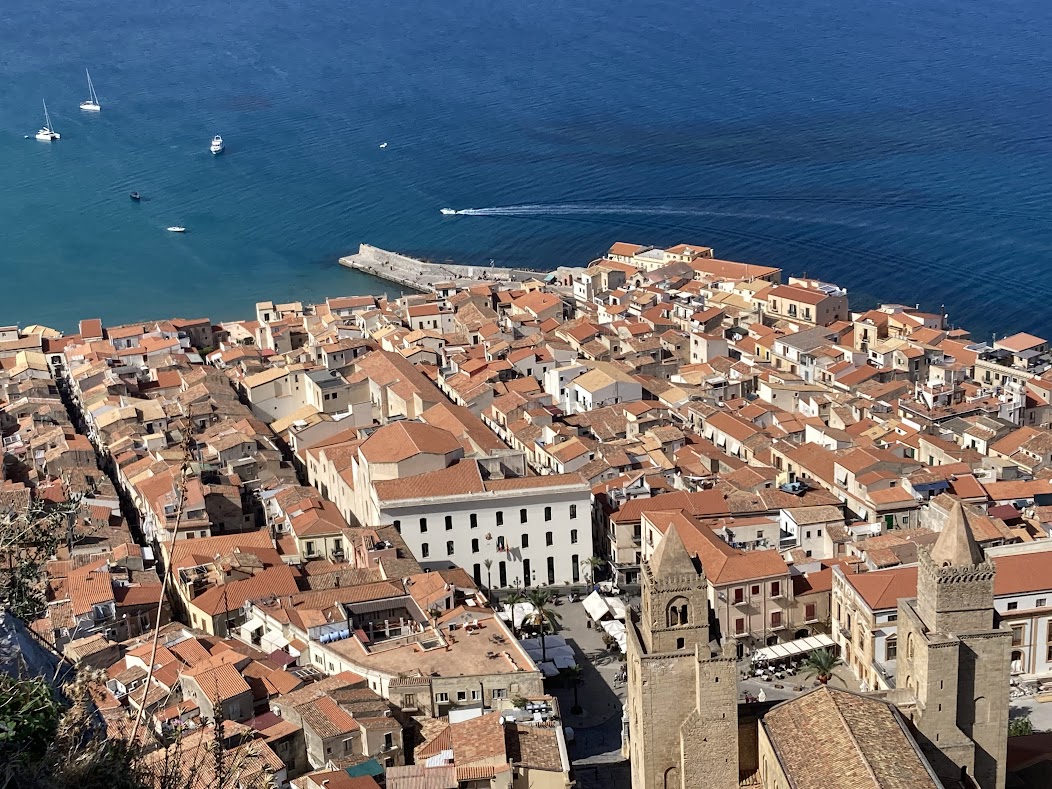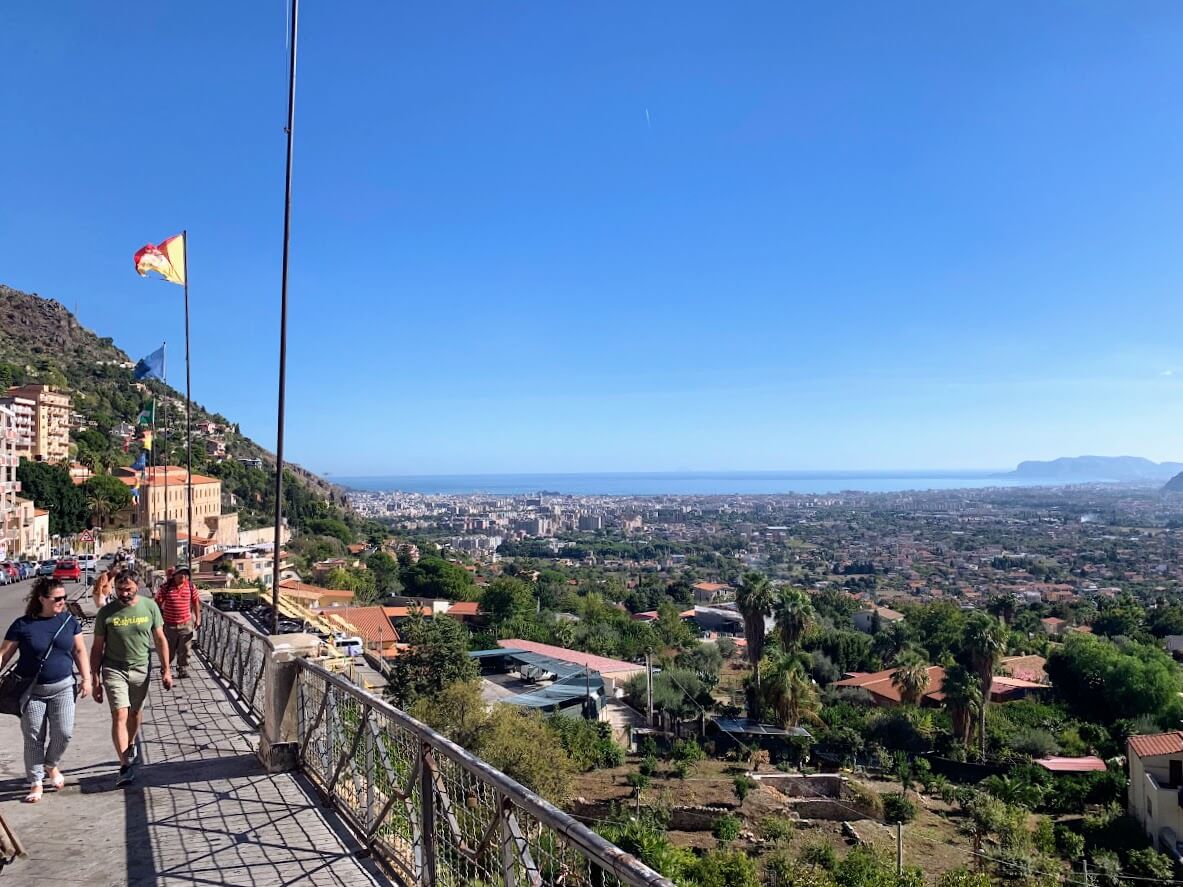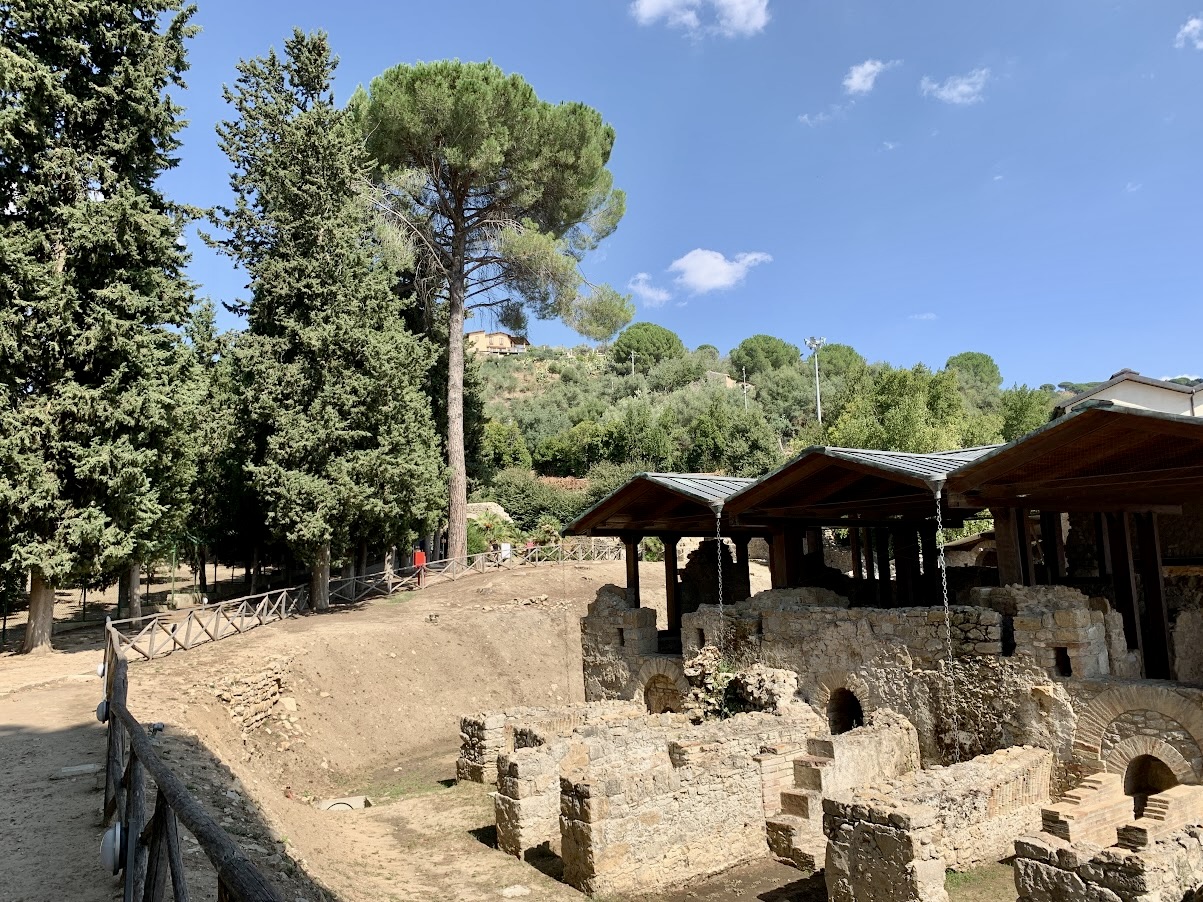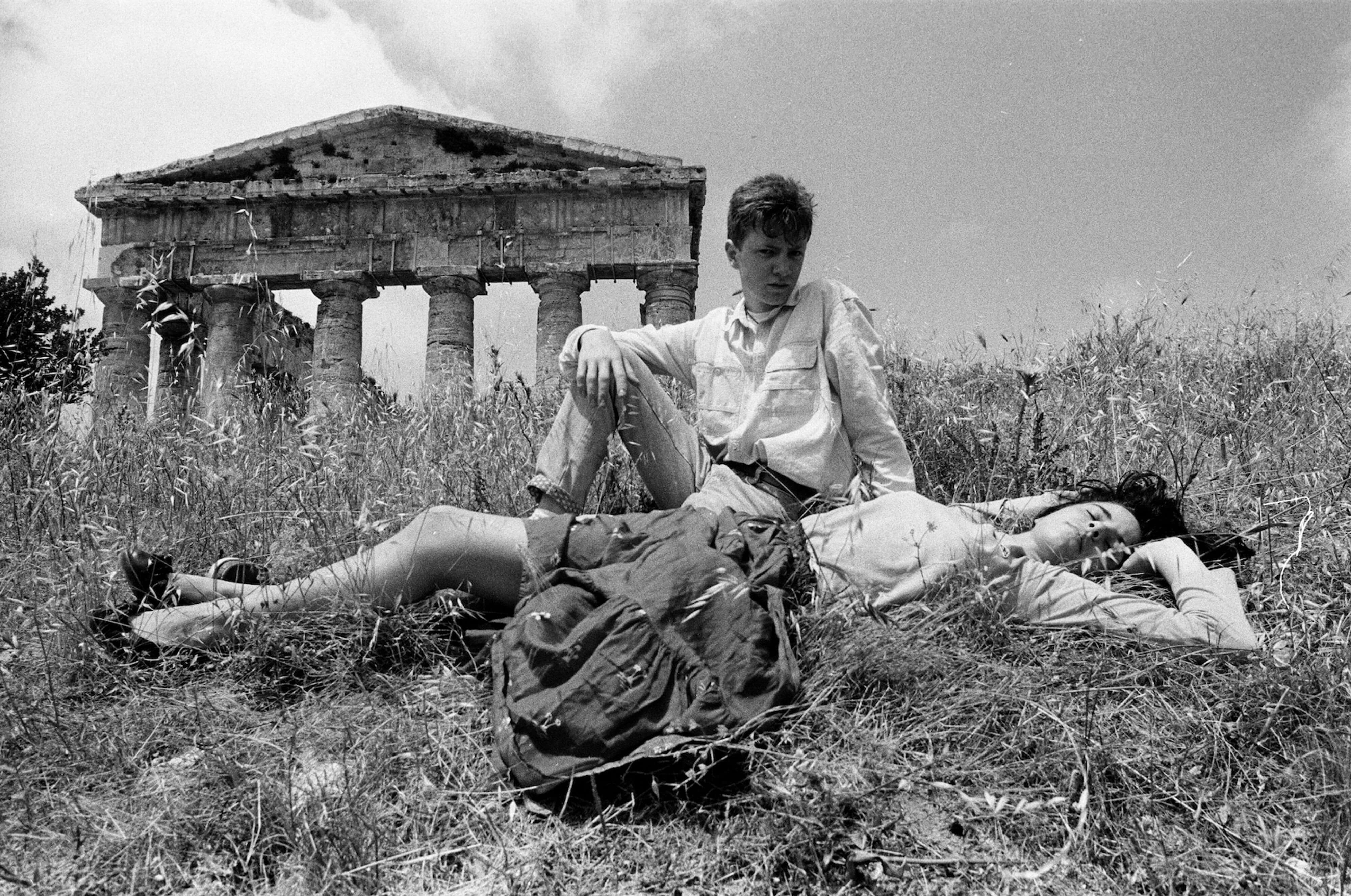- Home
- Things to Do in Sicily
- Arab-Norman Palermo
The Architectural Splendor of the Arab-Norman Palermo
The city of Palermo, in Sicily, is known for its many historical buildings that seamlessly blend Arab and Norman styles. One of the marvels of Palermo's rich history is the harmonious collaboration between Islamic and Western traditions at a time when the rest of Europe was in the middle of religious slaughtering—a.k.a. the Crusades.
Arab-Norman Palermo's architecture, recognized as a UNESCO World Heritage Site, showcases the city's fascinating history and position in the cultural crossroads. The fusion of Arab and Norman styles is evident in iconic landmarks such as the Palermo Cathedral and the Royal Palace of Palermo.
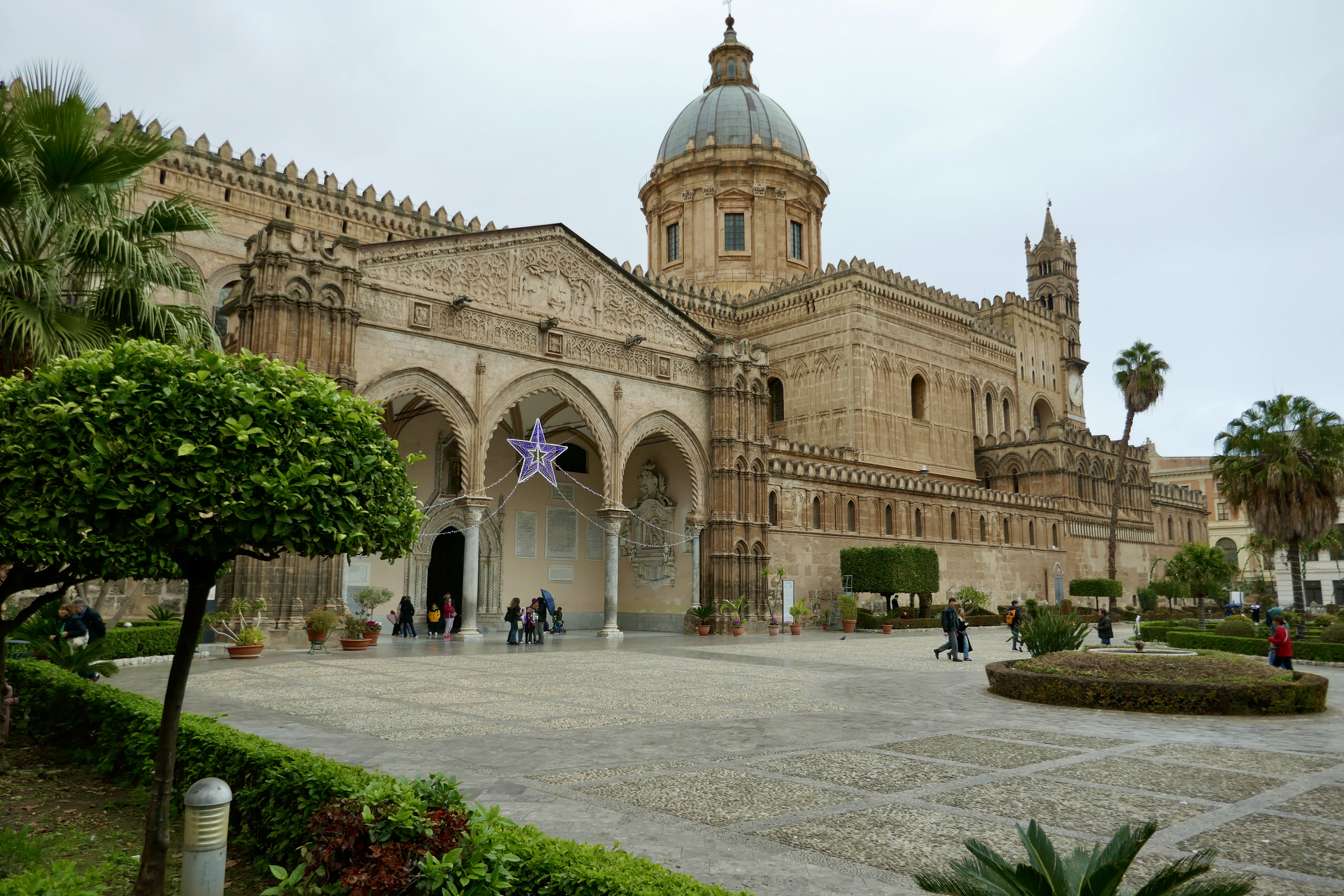 Palermo Cathedral blends many architectural styles, including Arab, Norman, and Gothic.
Palermo Cathedral blends many architectural styles, including Arab, Norman, and Gothic.Amidst the bustling streets, visitors can witness the influences that have shaped Palermo's architectural landscape. From the ornate Palazzo dei Normanni to the majestic—if plain—Zisa Castle, Arab-Norman Palermo's beauty offers a journey back to the Sicilian Middle Ages.
So, let's examine this enchanting fusion that has captivated hearts for centuries and immerse ourselves in the history that makes Palermo truly one of its kind.
Historical Background of the Arab-Norman Palermo
The Arab-Norman period in Sicily represents the most significant phase in the island's history. It is marked by a blend of cultures that left an indelible mark on its architecture and society.
Beginning in the 9th century, the Arab conquest introduced many innovations to Sicily. These included the latest methods in agriculture, science, and architecture, which transformed the island's landscape together.
This era established a flourishing Islamic culture that thrived for two centuries. During that time, the Arabs developed advanced irrigation techniques, cultivated new crops, and enriched the local economy. The cultural melting pot that emerged from this period set the stage for the later Norman conquest in the 11th century.
When the Normans arrived in Sicily, they found a rich tapestry of cultural influences already in place, thanks to the centuries of Arab rule. The Normans, originally from Scandinavia, adapted to their new surroundings by embracing local customs and integrating them into their practices.
This cultural synthesis led to a remarkable architectural style that combined elements of Islamic art with the robust features typical of Norman structures. The period saw the rise of a unique vision of beauty, characterized by intricate designs that reflected the elegance of Arab aesthetics and the solidity of Norman fortifications.
The culmination of this architectural fusion is evident in the monuments scattered throughout Palermo and beyond. The outstanding accomplishments of this era were recognized in 2015 when UNESCO designated the Arab-Norman architecture of Palermo as a World Heritage Site.
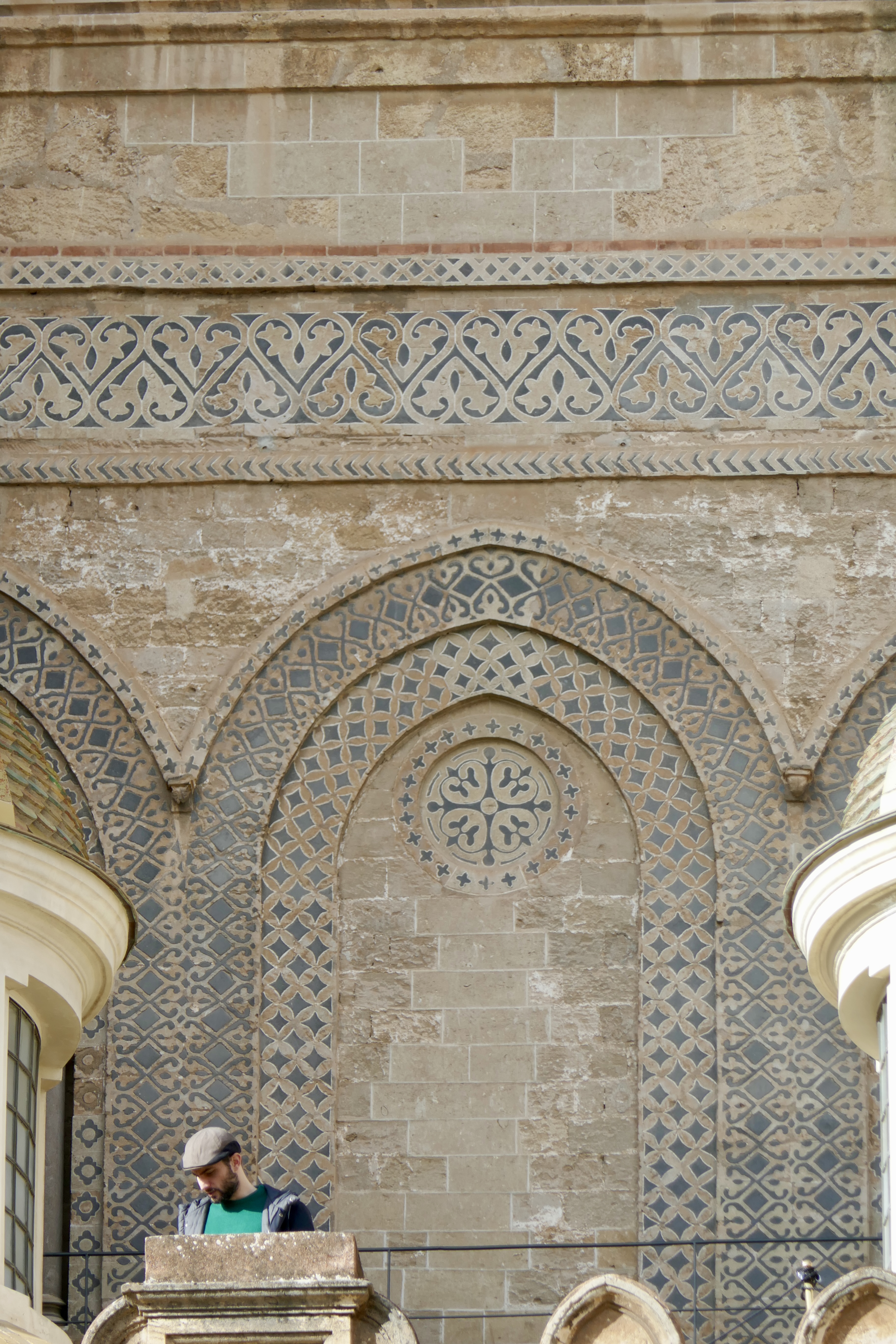 Islamic decorations near the roof of Palermo Cathedral.
Islamic decorations near the roof of Palermo Cathedral.Features of Arab-Norman Architecture in Palermo
Arab-Norman architecture in Palermo is characterized by a distinctive style that merges Islamic motifs with Norman structural elements. This unique architectural form is marked by pointed arches, domes, and intricate decorative patterns that draw heavily from Islamic art.
These features create a sense of lightness and elegance, which contrasts beautifully with the robust nature of Norman architecture. The interplay of geometric patterns and natural forms is a hallmark of this style, often seen in the decorative tile work and stuccoes that adorn the facades of many buildings.
Another defining characteristic of Arab-Norman architecture is the incorporation of innovative engineering techniques. The use of ribbed vaults and complex domes allowed the creation of expansive interior spaces that were both functional and artistically impressive.
This architectural ingenuity is exemplified in the construction of grand halls that served as royal residences and places of worship. The balance between aesthetics and functionality is a testament to the skill and creativity of the artisans and craftsmen of the time, who could seamlessly blend form and purpose.
In addition to the structural features, the landscape surrounding these architectural marvels reflected the Arab influence on Palermo. The gardens, courtyards, and water features were reminiscent of traditional Islamic design, emphasizing harmony with nature and the importance of outdoor spaces in daily life.
This connection to nature was aesthetic and served practical purposes, providing cooling shade and creating serene environments for contemplation and social gatherings. The result is an architectural style that is not just about buildings but about creating a cohesive experience that engages the senses and enriches the spirit.
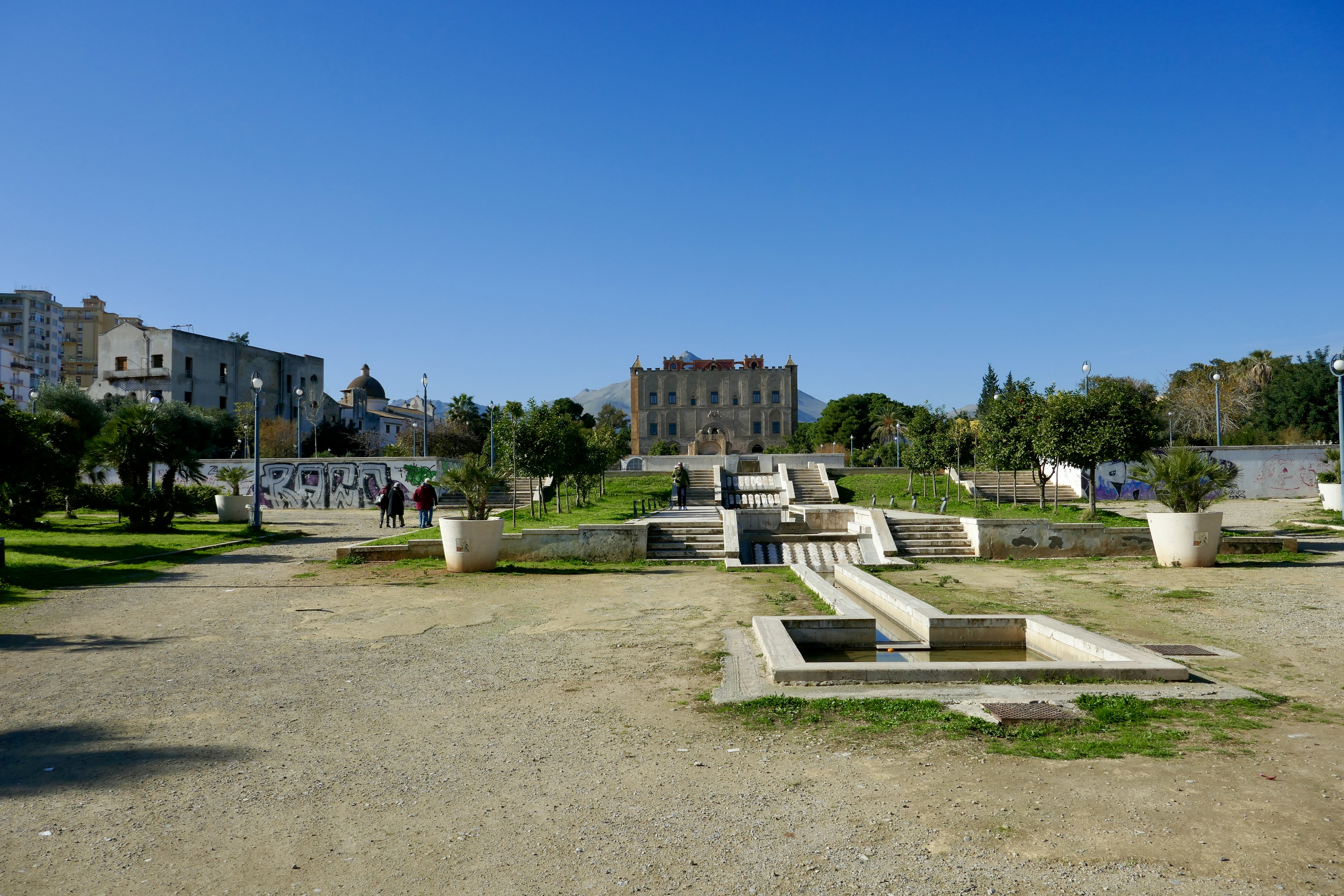 Today, the Islamic garden of Zisa Palace is a public park.
Today, the Islamic garden of Zisa Palace is a public park.The Norman Palace and Its Architectural Significance
The Norman Palace, or Palazzo dei Normanni, is one of Palermo's most important symbols of the Arab-Norman fusion. Originally a Byzantine fortress, the Normans transformed it into a royal residence that exemplified the architectural synthesis of the time.
The most striking aspect of the Norman Palace is the Palatine Chapel, located within its walls. Built in the 12th century, the chapel is a masterpiece of Arab-Norman architecture, featuring stunning mosaics depicting religious scenes and figures.
Exploring the Stunning Mosaics of the Palatine Chapel
The Palatine Chapel, located within the Norman Palace, is often regarded as one of the finest examples of Arab-Norman artistry. Its stunning mosaics, which cover the walls and ceilings, are a breathtaking blend of religious iconography and intricate design.
The interplay of natural light filtering through the chapel's windows creates a dynamic visual experience as the colors shift and change throughout the day. This use of light not only highlights the beauty of the mosaics but also elevates the spiritual atmosphere of the space.
The chapel reminds us of the harmonious coexistence of different cultures in Sicily, where Islamic and Christian motifs coexist.
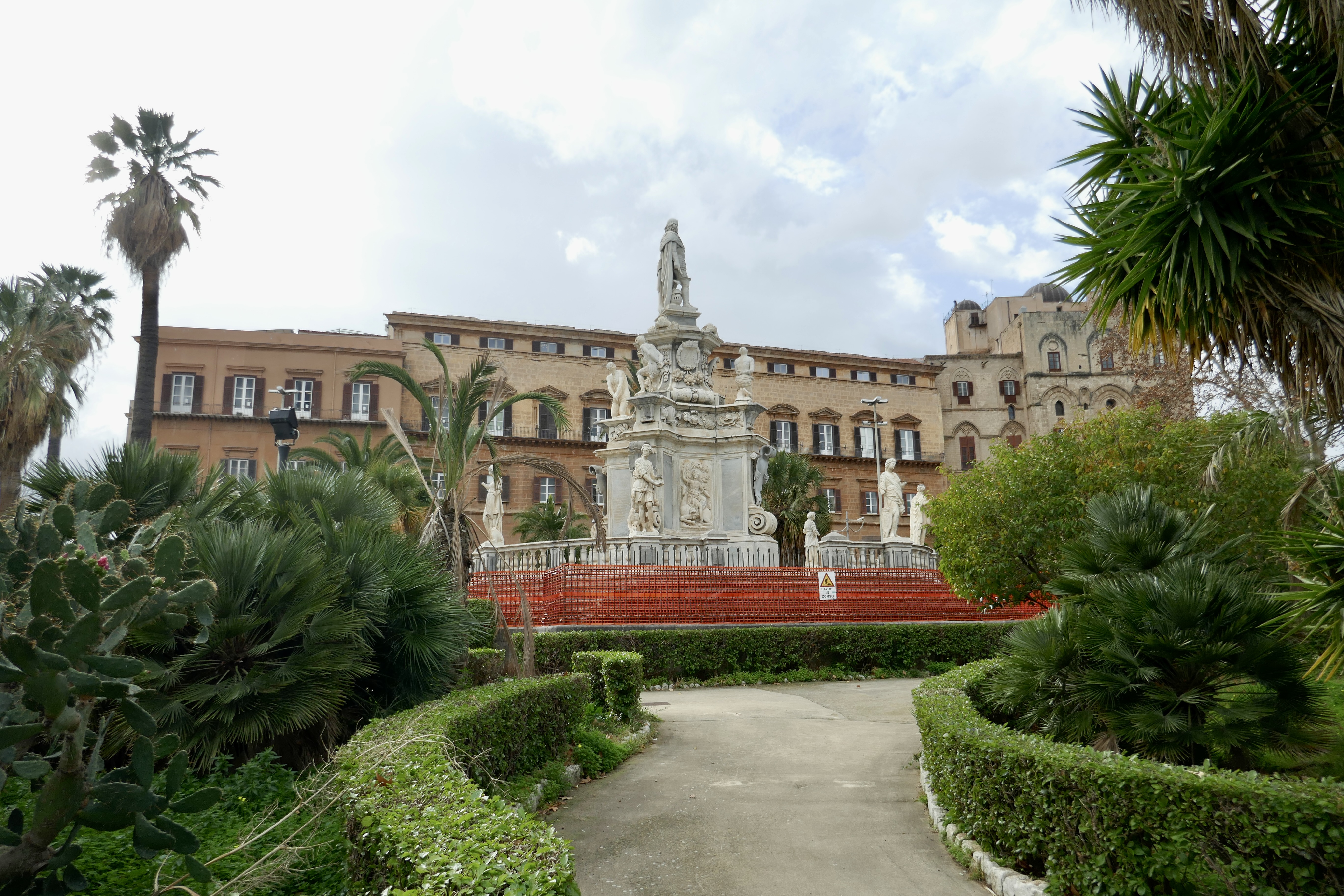 The Norman Palace and, inside it, the Palatine Chapel.
The Norman Palace and, inside it, the Palatine Chapel.The Beauty of the Cathedral of Palermo
The Cathedral of Palermo, known as the Cattedrale di Palermo, is yet another remarkable example of Arab-Norman architecture that draws the admiration of visitors worldwide.
Initially built in the 12th century, the Cathedral has undergone numerous renovations and expansions over the centuries, resulting in a structure that embodies various architectural styles.
Its façade features a captivating mix of Norman, Gothic, and Baroque elements, showcasing the layers of history that have shaped this iconic building.
Visitors can also see the tomb of Emperor Frederick II, a significant historical figure who played a crucial role in Sicily's cultural and political landscape. The city's patron saint, Santa Rosalia, also has her chapel in the Cathedral, where her relics are kept.
The Zisa: A Masterpiece of Arab-Norman Fusion
The Zisa, or Castello della Zisa, is a piece of Arab-Norman architecture that often gets neglected - maybe because it's outside the historical center. Although more on the plain side, it still captures the essence of this unique fusion of styles.
Built in the 12th century as a royal summer residence, the Zisa showcases the influence of Islamic design principles, particularly in its layout and decorative elements. The name "Zisa" derives from the Arabic term meaning "delight. " The castle lives up to its name with its beauty and surroundings.
Inside the Zisa, visitors are greeted by a series of richly decorated rooms that showcase the intricate craftsmanship of the time. The walls are adorned with elaborate stucco work and colorful tile mosaics, reflecting the vibrant art scene that flourished during the Arab-Norman period.
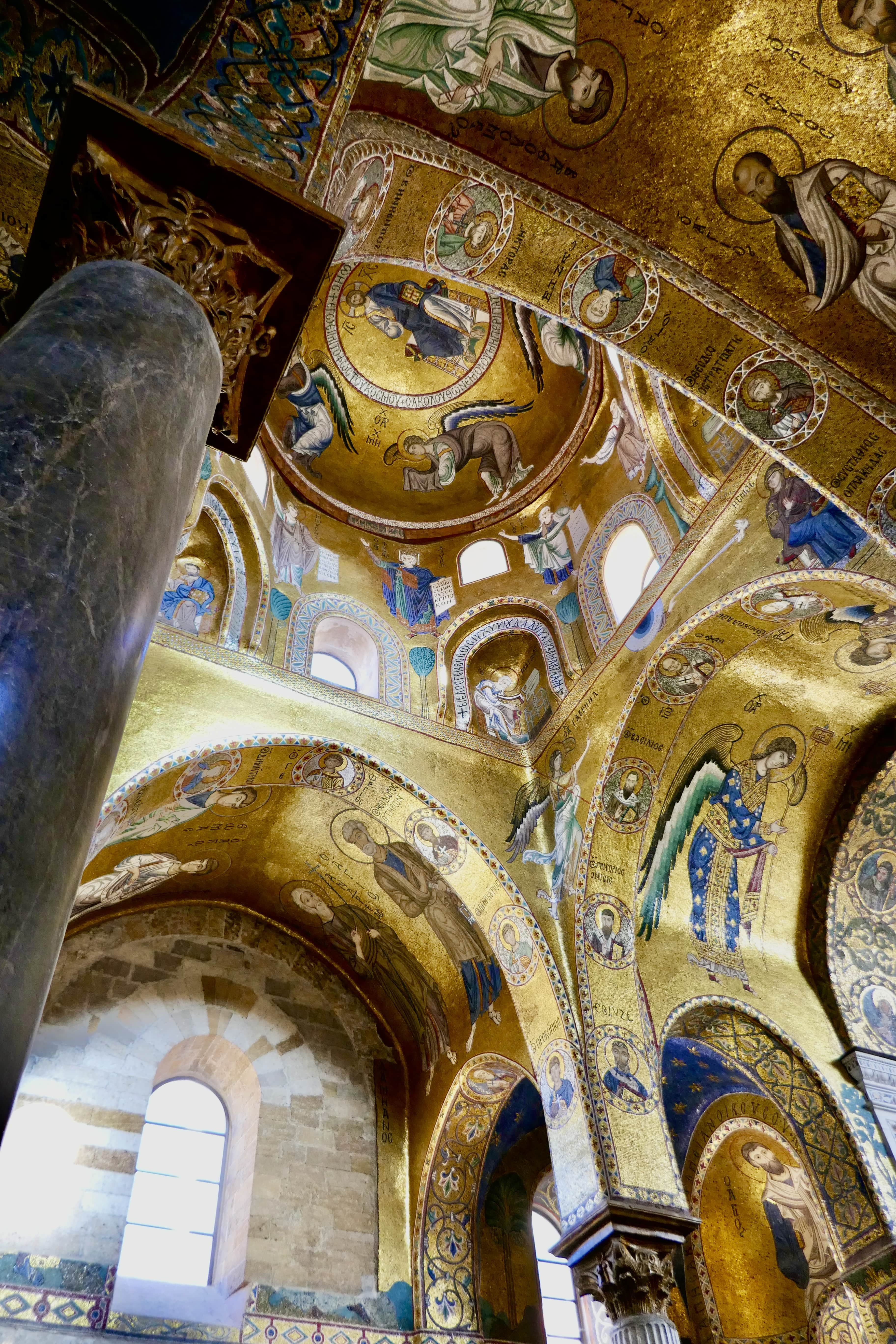 Inside the Martorana Church.
Inside the Martorana Church.The Martorana Church: A Unique Blend of Styles
The Church of Santa Maria dell'Ammiraglio, commonly known as the Martorana, is one of the most beautiful examples of Arab-Norman architecture. Built in the 12th century, the church features Norman and Byzantine elements. The exterior is characterized by its simple façade, which belies the richness of the interior, where visitors are greeted by stunning mosaics and elaborate decorations.
Inside the Martorana, the walls and ceilings are adorned with breathtaking mosaics that depict biblical scenes and figures. These mosaics are remarkable for their artistic quality and historical significance, as they illustrate the transition from Byzantine to Arab-Norman styles.
More information on Martorana Church HERE.
The Church of St. John of Hermits
The Church of San Giovanni degli Eremiti is another nice example of Arab-Norman Palermo. It is situated near the Norman Palace. It's a charming little place that was a monastery in the Middle Ages. The red domes are its most visible sign of Islamic influence. The same goes for the geometrically soothing design of the inner courtyard.
This church, originally built in the 6th century and later renovated in the Arab-Norman style, embodies the fusion of influences that characterize Palermo's architectural heritage.
Arab-Norman Architecture Near Palermo
Arab-Norman architecture is not limited to the city of Palermo. Perhaps the most impressive Cathedral is in the town of Monreale, which is a short bus or taxi ride from Palermo.
Monreale Cathedral is in the same style as the Palatine Chapel and the Martorana Church. The difference is its size. In that respect, this church, built by William II, is in a class of its own. Nevertheless, the walls are decorated with golden Byzantine mosaics - just like in the Palatine Chapel.
More information on Monreale Cathedral HERE.
There is also a Norman church in the charming coastal town of Cefalu. Inside, it's not up to its most beautiful companions, but it's still an impressive sight. In Cefalu, travelers can combine the Cathedral and medieval alleys with sun worship and fine sandy beaches.
More information on Cefalu HERE.
Conclusion: The Enduring Legacy of Arab-Norman Architecture in Palermo
The Arab-Norman Palermo is a remarkable testament to the city's rich and diverse history. This unique fusion of styles not only reflects the historical influences of the Arab and Norman cultures but also embodies the spirit of collaboration and creativity that defines Palermo's architectural landscape.
As a UNESCO World Heritage Site, Arab-Norman Palermo's architecture continues to captivate visitors worldwide. These buildings' beauty lies in their aesthetic appeal and ability to convey the complex narratives of the cultures that shaped them.
In a world that often grapples with divisions and differences, Palermo's Arab-Norman architecture is a shining example of what can be achieved when cultures work together.
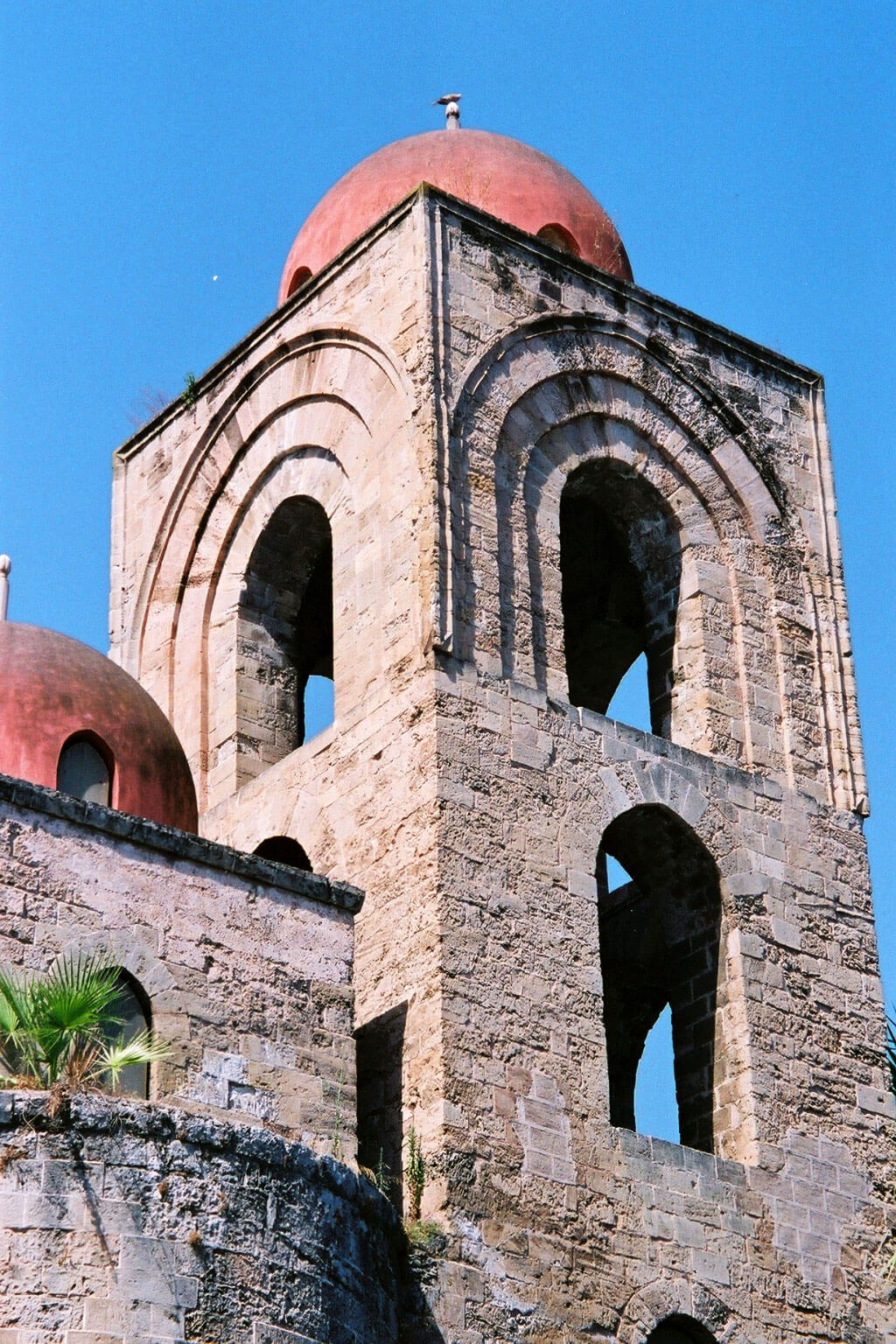 The bell tower in St. John of the Hermits Church.
The bell tower in St. John of the Hermits Church.(January 9, 2025)
Recent Articles
-
Villa Palagonia: The Enigmatic "Villa of Monsters"
May 07, 25 01:41 PM
Villa Palagonia: A Baroque masterpiece and a piece of Sicilian eccentricity -
Villa Romana del Casale - A Piece of Ancient Rome
Apr 29, 25 01:58 PM
Villa Romana del Casale: an astonishing collection of Roman mosaics in the heart of Sicily -
Letizia Battaglia: Capturing Life Through the Lens
Apr 29, 25 06:54 AM
Letizia Battaglia captured the raw essence of life in Sicily like no other
Follow MANY FACES OF SICILY on Facebook, Instagram, Bluesky & Pinterest
Contact: vesa@manyfacesofsicily.com

